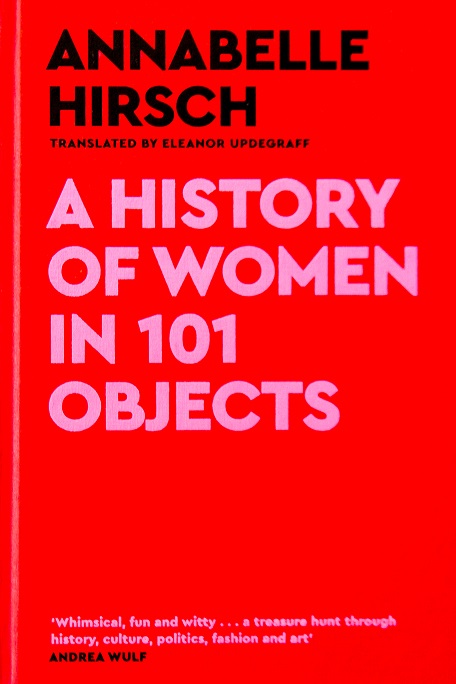“JUST a few drops of No. 5”, naughtily responded Tinseltown’s Golden Era’s ultimate sex symbol, Marilyn Monroe, when back in 1952 Life magazine cheekily asked her: “What do you wear to bed?”
The No. 5 the blonde bombshell alluded to was the perfume its inventor, Coco Chanel, concocted to be distinguishable from other offerings of the epoch of the ‘new woman’ back in the early 1920s – with the express intent to make her “smell like a woman, not a rose!” Chanel – according to one of numerous legends – picked up, through her nose, the fifth of ten different formulations by a perfumer named Ernest Beaux, who had been striving to adapt a specific fragrance to suit the French nose. Chanel No. 5, it is claimed, is a ‘rip-off’ of a variation the perfumer produced.
Whatever the veracity regarding its origins, Vogue declared that the ‘spirit of the modern woman’ was expressed in the perfume.
The preceding morsel is among a myriad of anecdotes contained in journalist, Annabelle Hirsch’s hardback, A History of Women in 101 Objects, which takes readers through distant millennia to the current Fourth Industrial Revolution. From the female perspective insofar as ideologies, inventions, trends, etc. throughout time have determined and influenced women’s places in societies buttressed by the currents of the age-old ‘battle of the sexes’.
A plethora of fascinating incidents and developments await perusal through the knowledge imparting pages interspersed with illustrations set on light pink pages complementing those expounding on topics, most of which resonate with everyday lived experiences.
Consider this synopsis on the Singer sewing machine: the advent of the Singer in 1851 allowed women to save time since making new clothes on a machine was around three times faster than sewing them by hand. Went the entity’s advertising slogan, ‘Sold only by the maker directly to the women of the family.’ Shockingly, the prevailing patriarchal perspective of the period wasn’t so welcoming of the paradigmatic shift, daring to blame industrialist Isaac Singer thus: “You’re getting rid of the only thing we can use to keep women quiet for a while!”
Further evidencing how the notion of gender parity has been aeons in evolving to its present manifestation, back in 1889, a recreational activity now commonplace as riding a bicycle, stirred newspaper headlines aplenty!
Encouraged by a women’s rights activist named Elizabeth Cady Stanton who stated that the most significant invention of the nineteenth century in terms of women’s emancipation was the bicycle – from the 1890s onwards, women would be sighted from the streets of New York, Boston to the parks of London and Paris on happy-go-lucky safety bicycle rides!
‘Twas the hilt of the Victorian Era when the norm was for women to remain homebound and weren’t expected to be out on streets. Thus, imagine they taking the freedom of the ride a mile further by ditching lengthy skirts which would get tangled up in the wheels and substituting them with a garment which back then was provoking frenzy, known as bloomers (in their earlier iteration puffed up trousers reaching to the ankles, instigated as a fashion reformation in 1851 by women suffragists such as Amelia Bloomer) – yet offered ease of cycling.
“Scandal!” conservatives bellowed.
Elsewhere in Hirsch’s selection is the origins of an object now very much a part of the male commode, the fountain. ‘One of the most famous works in the history of art’ (and 87 years later in 2004 voted the most influential work of the 20th century) was created by a certain Baroness Elsa von Freytag-Loringhoven. Entered at an exhibition in 1917 in the form of a ceramic urinal, the jury rejected it as a ready-made object which couldn’t be classified as a work of art, and withdrew it from the display, resulting in public outrage.
Initially regarded to be the work of the French sculptor, Marcel Duchamp, the belief prompted the American essayist, Siri Hustvedt, to enquire indignantly: “Why is it hard for people to accept the intellectual and creative authority of artists who are women?”
A background on the household brand, Tupperware, relates how a door-to-door sales rep of household goods named Brownie Wise lend her marketing acumen to an American plastics manufacturer named Earl Tupper who had vowed on becoming a millionaire by the age 30. Having transformed an idea into the production of utensils known as Tupperware – he found his products gathering dust on store shelves due to consumers’ reluctance until Wise assisted in the realization of his ambition by introducing the marketing system of ‘Tupperware parties’ at which she’d demonstrate the benefits of the utensils to ladies who’d end up placing orders!
Not only did such a concept benefit Tupperware but also expedited the emancipation of women in 1950s USA as they started working as freelance party hosts. No longer did they have to remain bored in their kitchens whilst wondering, “what shall I do with the leftovers?”
If South Africa had the equivalent of the USA’s CROWN Act (ensuring protection against race-based hairstyle discrimination) enshrined in its constitution, the 2016 debacle ranging Zulaikha Patel against Pretoria Girls High School regarding her afro could had been pre-empted.

Such a reminder surfaces to the fore in a segment informing about Madame C.J. Walker’s Wonderful Hair Grower which from 1904 onwards enhanced African-American women’s hair and appearance pending an era when beauty was deemed the preserve of white women!
On another front, 1967 heralded the precursor to Black feminism with the release of Aretha
Franklin’s hit song, Respect. “Respect,” she meant, “more as a male-female thing.” Opined the eminent activist, Angela Davis: “She brought a feminist dimension to our consciousness with ‘Respect’.”
Other topics of fascination contained in the tome touch on the advents of the contraceptive pill, the menstruation cup, the vacuum cleaner, the bikini, the lipstick, et cetera!
Published by Canongate and distributed in South Africa by Jonathan Ball Publishers, A History of Women in 101 Objects retails for R540 and is available at leading bookstores countrywide.
Top Image (Annabelle Hirsch- author of A History Women in 101 Objects).

